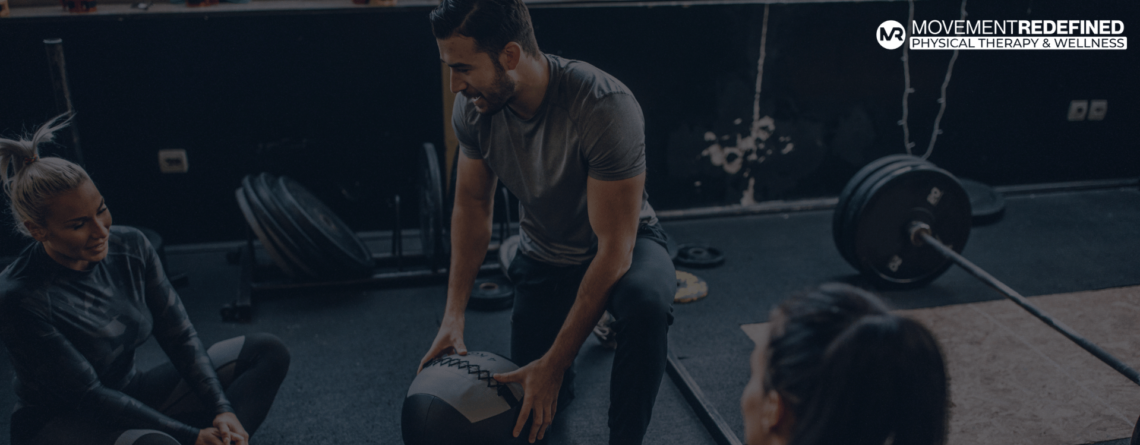Training Smarter, Not Harder: Rest/Recovery Built into Personal Training
When it comes to personal training, most people tend to think of intense workouts, lifting heavier weights, or pushing their bodies to the limit. While challenging the body is certainly a key aspect of fitness, many overlook an equally important component: rest and recovery.
Personal trainers understand that real progress is made not just during workouts, but in the time between them, when the body heals, regenerates, and grows stronger. The balance between training and recovery is crucial for both short-term results and long-term fitness success.
This article dives into the science behind rest and recovery and how personal trainers incorporate these elements into their training programs to ensure sustainable and safe fitness progress.
The Science of Rest & Recovery
To understand why rest and recovery are essential, it’s important to first grasp what happens during a workout. When you engage in physical activity, particularly strength training or high-intensity exercises, your muscles experience microtears. These microtears are a natural response to the stress placed on your muscles during exercise. Over time, with proper recovery, your body repairs these tiny injuries and rebuilds the muscles stronger than before—a process known as muscle hypertrophy.
However, if you don’t allow your body the necessary recovery time, those microtears accumulate and can lead to muscle fatigue, injury, or even burnout. Personal trainers know that without adequate rest, your body can’t perform at its best. This is why a structured approach to rest and recovery is vital to achieving your fitness goals while avoiding setbacks.
Types of Recovery in Effective Personal Training
Personal trainers strategically incorporate different types of recovery into their clients’ routines. These include both passive and active recovery, each serving a unique purpose.
- Passive Recovery: This is the type of rest most people think of when they hear the word “recovery.” Passive recovery involves complete rest, where no physical activity is performed. This is crucial for allowing your muscles, nervous system, and joints time to heal fully. While you sleep, your body produces growth hormones that help repair tissues, making rest days essential for muscle recovery. Personal trainers often advise clients to schedule at least one or two passive recovery days per week, depending on the intensity of their training program.
- Active Recovery: Unlike passive recovery, active recovery involves light exercises that promote blood circulation and aid in muscle recovery without putting too much strain on the body. Personal trainers recommend activities such as walking, swimming, yoga, or even low-intensity cycling on active recovery days. These movements help reduce muscle soreness, also known as delayed onset muscle soreness (DOMS), by flushing out lactic acid and delivering oxygen and nutrients to the muscles. Active recovery allows clients to stay active without overstressing their bodies.
- Sleep and Nutrition: While sleep and nutrition may not be considered traditional forms of recovery, they are absolutely crucial to the process. Personal trainers emphasize the importance of adequate sleep (typically 7-9 hours per night) to ensure that the body has enough time to enter the deep sleep phases necessary for muscle repair and recovery. Additionally, nutrition plays a key role in recovery—consuming the right balance of proteins, carbohydrates, and fats helps fuel the recovery process. Trainers often work with clients to develop meal plans that promote muscle growth and overall health.
How Personal Trainers Integrate Rest and Recovery into Programs
The balance between rest and exercise is delicate and varies for each individual. Personal trainers are adept at assessing their clients’ needs and tailoring workout programs that optimize both training and recovery. Here’s how they do it:
1. Periodization: Periodization is the systematic planning of training phases, often cycling through periods of intense training followed by lighter or recovery-focused phases. Personal trainers use periodization to prevent overtraining and promote long-term progress. For example, a personal trainer might design a program where a client focuses on building strength for six weeks, followed by one or two weeks of reduced intensity to allow the body to recover before starting the next cycle. This approach prevents burnout and ensures sustainable growth.
2. Rest Days: Rest days are non-negotiable in any effective fitness program. Personal trainers design workout schedules that incorporate designated rest days to allow for physical recovery. These rest days are strategically placed to give specific muscle groups the recovery time they need. For example, if a client trains their legs on Monday, a personal trainer might schedule the next leg workout for Thursday, allowing at least 48 hours of rest in between.
3. Recovery Workouts: Instead of having clients push their limits every single workout, personal trainers often include lighter, recovery-focused sessions. These recovery workouts might focus on mobility, stretching, or low-intensity cardio to promote active recovery. For example, a personal trainer might design a “recovery day” workout that includes foam rolling, dynamic stretching, and gentle yoga poses to keep the body limber and reduce the risk of injury.
4. Monitoring Recovery Metrics: Experienced personal trainers monitor their clients’ recovery using various tools and methods. Heart rate variability (HRV), for example, is a metric that measures the time variation between heartbeats and is used to assess a client’s readiness to train. A high HRV indicates that the client is well-rested and ready for intense training, while a low HRV suggests that more rest is needed. Personal trainers may also use subjective indicators like how clients feel or their energy levels to adjust workouts accordingly.
5. Individualized Recovery Plans: One of the benefits of working with personal trainers is that they can tailor recovery strategies to individual clients. Factors such as age, fitness level, and personal goals all affect how much rest is necessary. Personal trainers will also take into account previous injuries or specific conditions that require modified recovery plans. For instance, someone recovering from a shoulder injury may need more rest and physical therapy exercises built into their plan compared to someone with no prior injuries.
The Role of Active Recovery in Long-Term Success
Active recovery plays a unique role in ensuring long-term fitness success. It’s not just about giving your muscles a break—active recovery keeps the body moving and prevents the stiffness or soreness that often follows intense workouts. This can help maintain a client’s motivation and consistency, key factors in achieving long-term goals.
Personal trainers use active recovery days to integrate exercises that improve flexibility, mobility, and overall movement patterns. For example, they might incorporate dynamic stretching routines, low-impact exercises like swimming, or even sports and recreational activities that clients enjoy. This keeps fitness fun while still providing a break from the more demanding aspects of training.
Maximize Your Results Through Proper Rest & Recovery
In the pursuit of fitness goals, many people fall into the trap of thinking that more is always better. However, personal trainers know that rest and recovery are just as important as the workouts themselves. The science behind recovery shows that it’s during these periods of rest that the body repairs, rebuilds, and grows stronger. Whether it’s through passive rest days, active recovery exercises, or carefully planned training phases, personal trainers ensure that their clients recover effectively, reducing the risk of injury and ensuring long-term success.
Ready to achieve your fitness goals while giving your body the care it deserves? At Movement Redefined, our expert personal trainers and physical therapists design personalized programs that balance intense workouts with effective rest and recovery strategies, ensuring long-term success without the risk of burnout or injury. Whether you’re aiming for strength, flexibility, or pain relief, we’re here to guide you every step of the way. Contact us today to start your journey to a healthier, stronger you!





